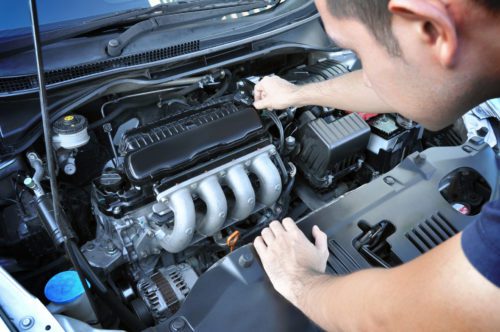Union City CA – History of Automotive Electrical Systems | Auto Repair Shop News
Posted in: Industry News

Many early cars had no electrical system, not one wire in the entire vehicle. The engine was cranked by hand. Early automotive ignitions were extraordinarily primitive and finicky by modern standards. Many used flame to heat a piece of metal over which gasoline flowed. Acetylene lamps served as headlights for night driving. Hand cranking to start a car was a dangerous process and limited mass appeal for automotive technology. In 1910 an auto designer whose company had been acquired by General Motors stopped to help a motorist whose car had stalled. While cranking the engine, it kicked back, giving him a grievous injury. While hospitalized, he caught pneumonia and died.
Henry Leland, head of Cadillac, knew the engineer and was horrified to hear of the man’s death. Leland directed his company to eliminate the hand crank as a starting device. Charles Kettering was given this job. He invented the first integrated electrical system. It included an electric starter, battery, and a generator to keep the battery charged and power the systems. His other inventions were accessories which included headlights and a dependable points ignition system. This landmark invention in automotive history debuted in the 1912 Cadillac.
As they attracted consumer attention, electrically powered accessories became ubiquitous in succeeding generations of cars. Electrical requirements grew with automotive technology until, in the 1960s, the capacity of the direct current DC generator became inadequate. In 1960 Chrysler introduced the alternator, an alternating current AC generator. Diodes within the alternator convert AC output to the DC required by the automobile’s electrical system.
Unlike a DC generator, an alternator produces plenty of current at low engine RPM for the ever-increasing list of electrical accessories modern cars include in their options list. Larger bundles of wires under the dash resulted. This resulted in a time-consuming thrash to Locate a short circuit. Mechanics of the day needed a wiring diagram and the ability to interpret it.
Today electric components continue to be added to vehicle electrical systems; electronic engine management systems provide increased performance, better fuel economy, and lower exhaust emissions. Since the 1960s, cars have had a sophisticated central computer that controls many other specialized computers.
Almost every system on a modern car uses electricity or electronics in some manner. Using fiber optics and multiplexing has made it possible to eliminate the large bundles of wiring found on older vehicles. Troubleshooting and repairing these electronic systems require significant training and experience. Systems like antilock brakes and stability control improve safety. They are only possible with electronic connections to a central computer. Engine emission control devices such as oxygen sensors and catalytic converters depend on an electronic interface with the engine control module, ECM. Electronic warning lights and gauges help the driver monitor the vehicle’s operation. Electronic fuel injection, electronically controlled transmissions, and other devices make modern cars a vast improvement over those of just a few years ago. Automotive specialty service technicians need an understanding of electricity and electronics to do their job successfully.
Return to: Union City CA – History of Automotive Electrical Systems | Auto Repair Shop News
Social Web